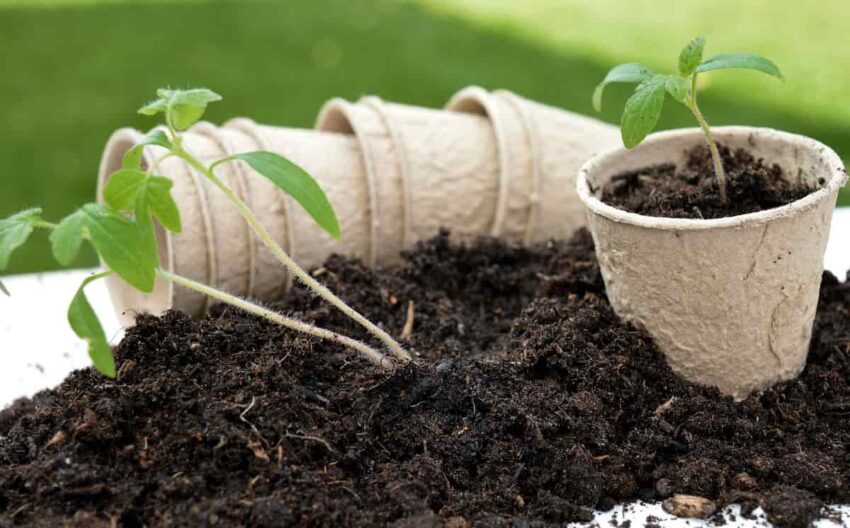Gardening enthusiasts know that the key to lush, thriving plants lies in the soil. Traditional composting has long been a go-to method for enhancing soil quality, but have you heard of vermicompost organic fertilizer? This eco-friendly, nutrient-rich, and sustainable alternative is gaining popularity among gardeners and potted plant lovers. In this article, we’ll delve into the world of vermicompost, exploring its benefits, how to create it, and why it’s a game-changer for your gardening endeavors.
What is Vermicompost?
Vermicompost, often referred to as “worm castings,” is a nutrient-rich, organic fertilizer and soil conditioner produced by earthworms. These diligent little creatures break down organic matter, such as kitchen scraps and yard waste, into a fine, dark humus-like material that’s a goldmine for plants.
The Science Behind Vermicomposting
Understanding how vermicomposting works is essential to grasp its benefits fully. When earthworms consume organic matter, they excrete nutrient-rich castings. These castings are packed with essential plant nutrients, including nitrogen, phosphorus, potassium, and beneficial microorganisms. This creates an ideal environment for plant growth.
Benefits of Using Vermicompost
Now that we know what vermicompost is let’s explore why it’s a game-changer for your garden and potted plants.
1. Nutrient-Rich Soil
Vermicompost enriches the soil with a balanced array of nutrients. This promotes healthier root development and overall plant growth.
2. Improved Soil Structure
The organic matter in vermicompost enhances soil structure, making it loamy and well-aerated. This helps with water retention and drainage, preventing waterlogged roots. Buy vermicompost online for Safe organic farming.
3. Pest and Disease Resistance
Vermicompost contains beneficial microbes that can suppress harmful pathogens and pests, reducing the need for chemical pesticides.
4. Sustainable Gardening
By recycling kitchen scraps and yard waste through vermicomposting, you reduce landfill waste and contribute to a more sustainable environment.
Creating Your Vermicompost
Now that you’re convinced of its benefits, here’s how you can create your vermicompost.
1. Choose the Right Worms
Not all worms are suitable for vermicomposting. Red wiggler worms (Eisenia fetida) are the go-to choice due to their voracious appetite and efficiency in converting organic matter into castings.
2. Select a Container
You’ll need a suitable container for your worms. A shallow bin with a lid and plenty of ventilation holes works well.
3. Bedding Material
Provide your worms with a bedding material such as shredded newspaper or cardboard. Ensure it’s moist but not soggy.
4. Feed Them Right
Add kitchen scraps like fruit and vegetable peels, coffee grounds, and eggshells to your worm bin. Avoid dairy, meat, and oily foods.
5. Harvesting the Vermicompost
In a few months, your vermicompost will be ready. You can harvest it by moving the worms to one side of the bin and scooping out the castings from the other side.
FAQs
Q1: Is vermicompost safe for all types of plants?
Yes, vermicompost is safe for most plants, but it’s best used in moderation for seedlings and young plants.
Q2: Can I use regular earthworms for vermicomposting?
No, it’s essential to use red wiggler worms (Eisenia fetida) for efficient vermicomposting.
Q3: How often should I feed my worm bin?
Feed your worms every week or so, depending on how quickly they consume the food.
Q4: Can I use vermicompost as the sole soil for my plants?
Vermicompost is an excellent soil conditioner, but for most plants, it’s best used in combination with other potting mix ingredients.
Q5: Is vermicompost odorless?
Yes, vermicompost should have an earthy, pleasant smell. If it smells foul, it might be a sign of overfeeding or poor aeration in your worm bin.
Conclusion
Incorporating vermicompost into your gardening and potted plant care routine is a fantastic way to boost plant health, reduce waste, and contribute to a greener world. By following the steps outlined in this article, you can harness the power of vermicompost and watch your plants thrive. So, why wait? Give vermicomposting a try and witness the green thumb magic it brings to your garden.


